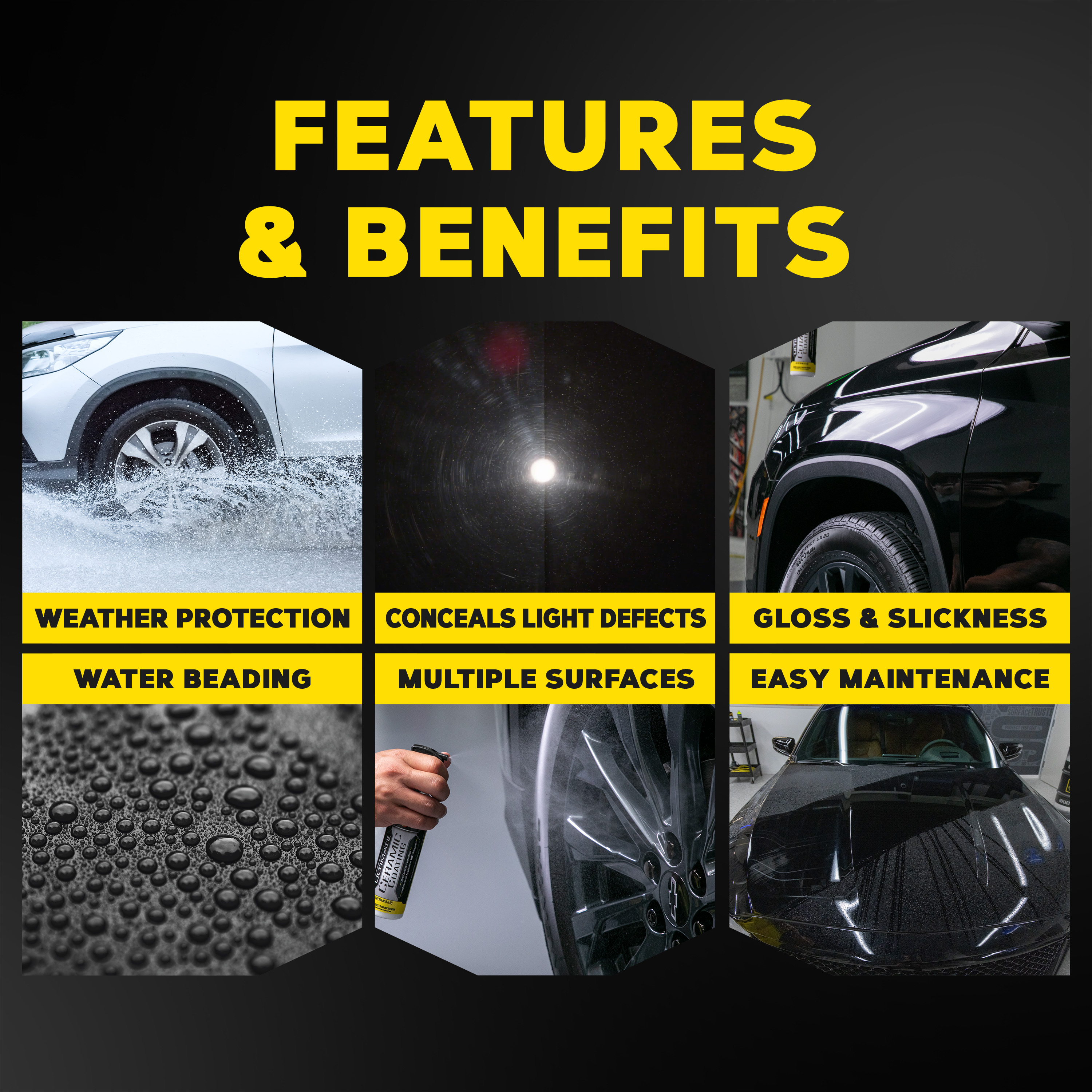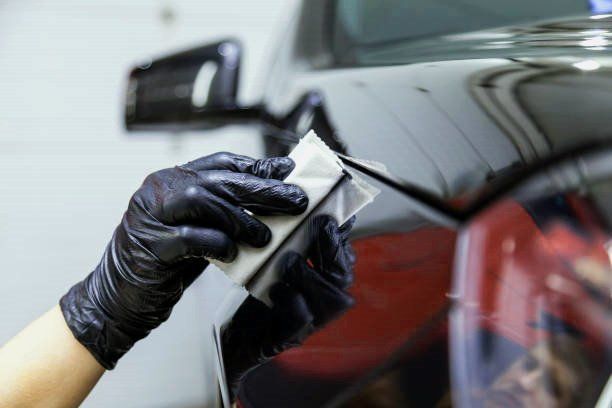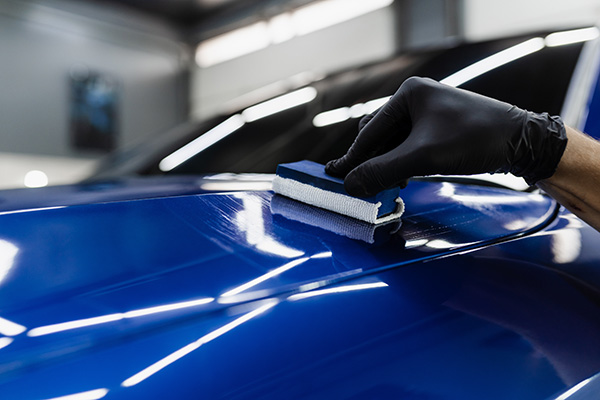Essential Upkeep Tips After Using Ceramic Coating to Your Car
Essential Upkeep Tips After Using Ceramic Coating to Your Car
Blog Article
The Function of Ceramic Layer in Safeguarding Your Automobile's Paint From Environmental Damages
Ceramic coating has emerged as an innovative option for automobile owners seeking to protect the stability of their automobile's outside. By establishing a durable chemical bond with the paint, this innovative technology supplies a formidable barrier versus different environmental hazards, such as UV rays, acid rain, and impurities. Comprehending the extensive advantages and the details of the application process is vital for optimizing its performance. As we discover the subtleties of ceramic layer, it ends up being noticeable that the selection to implement this safety action might considerably influence your automobile's durability and aesthetic.
What Is Ceramic Coating?
Ceramic coating is an advanced fluid polymer used to the external surfaces of a lorry, developed to offer a sturdy layer of protection for the paint. This innovative remedy forms a chemical bond with the automobile's factory paint, producing a hydrophobic and resilient guard. The finish is composed of nanoparticles that fill up in the microscopic imperfections in the paint, resulting in a smooth surface that boosts gloss and shine.
Usually, ceramic coatings are offered in numerous solutions, permitting for various degrees of protection and longevity. While some products can last for several months, others offer security for numerous years, depending on the thickness of the application and ecological variables. The application procedure requires careful prep work, including washing, decontaminating, and polishing the automobile's surface to ensure optimum bond of the coating.

Benefits of Ceramic Coating
One of the primary advantages of applying a ceramic layer is the outstanding protection it provides to automobile paint. This innovative coating develops a resilient layer that guards the car's surface area from a variety of ecological threats, consisting of UV rays, acid rainfall, bird droppings, and tree sap. By offering this robust protection, ceramic layers dramatically decrease the threat of fading and etching, maintaining the cars and truck's visual charm in time.
In enhancement to defense, ceramic finishings are renowned for their hydrophobic buildings, which push back water and dust, making it simpler to keep a tidy lorry. This self-cleaning effect lowers the regularity of washing, conserving both time and resources. Ceramic finishes enhance the deepness of the paint's gloss, resulting in a lively and polished look that raises the overall appearance of the lorry.
One more noteworthy advantage is the durability of ceramic coatings. Unlike standard waxes or sealers that call for frequent reapplication, ceramic finishings can last several years, supplying an economical option for vehicle owners looking for lasting defense. Overall, buying ceramic layer brings about enhanced sturdiness, lowered maintenance, and continual visual charm for vehicle paint.
Just How Ceramic Coating Works
A ceramic finish runs with a chemical bonding procedure that develops a safety layer on the car's paint surface. This cutting-edge remedy makes use of innovative nanotechnology, where tiny bits of silica are suspended in a liquid type - ceramic coating. Upon application, these fragments bond with the manufacturing facility paint, forming a hydrophobic and long lasting layer that improves the automobile's surface area
The primary element of ceramic finishes, silicon dioxide (SiO2), adds to the finishing's toughness and resilience. When cured, the covering transforms into a hard, glass-like finish that guards the paint from environmental pollutants such as dirt, UV rays, bird droppings, and tree sap. This molecular bond leads to a surface area that is not only immune to scratches yet likewise less complicated to cleanse, as dust and crud are less likely to adhere.
Furthermore, the hydrophobic homes of ceramic finishes cause water to grain and slide off, decreasing the opportunities of water places and mineral deposits. This safety obstacle effectively extends the life of the paint and preserves the car's aesthetic appeal, using vehicle owners a durable remedy for paint defense.
Application Refine of Ceramic Layer
When taking into consideration the application of ceramic covering, preparation is key to attaining optimum outcomes. Any type of scrapes or blemishes should be addressed at this phase, as the finishing will certainly bond with the surface area beneath.

Ceramic layer is then used in tiny areas, generally utilizing an applicator pad. The automobile should be left to heal in a regulated setting to allow the finish to completely bond with the paint.
Long-Term Upkeep and Treatment
Accomplishing an effective ceramic covering application sets the foundation for long-term security, however proper maintenance is crucial to preserving its advantages. Regular cleaning is crucial; next making use of a pH-neutral auto shampoo will help preserve the finish's honesty without creating damage. Stay clear of automated auto washes that use rough products, as they can compromise the layer's surface area.

In addition, using visit this page a ceramic layer upkeep spray can boost the existing layer, providing an additional boost in protection and luster. It's suggested to execute this every three to six months, relying on ecological exposure.
Finally, parking in shaded locations or using automobile covers can stop prolonged direct exposure to unsafe UV rays and environmental pollutants, additionally prolonging the life of your ceramic layer. By sticking to these upkeep practices, you can guarantee your lorry's surface continues to be secured and visually appealing for many years to come.
Verdict
In recap, ceramic coating serves as a vital protective action for vehicle paint, properly securing cars from a variety of environmental hazards. Its capacity to create a robust hydrophobic barrier not only boosts aesthetic appeal yet also considerably lowers the frequency and intensity of maintenance needed. The resilient nature of this advanced polymer underscores its worth in protecting Visit This Link vehicle integrity and look, inevitably adding to a much more durable and visually attractive vehicle coating.
Ceramic finish is an innovative fluid polymer applied to the outside surface areas of a lorry, designed to offer a durable layer of protection for the paint. Ceramic coverings improve the depth of the paint's gloss, resulting in a refined and dynamic look that boosts the total look of the vehicle.
A ceramic finish operates with a chemical bonding procedure that produces a safety layer on the car's paint surface area.The major component of ceramic layers, silicon dioxide (SiO2), contributes to the layer's stamina and strength.In summary, ceramic finish serves as a crucial safety step for auto paint, efficiently protecting vehicles from a variety of ecological hazards.
Report this page